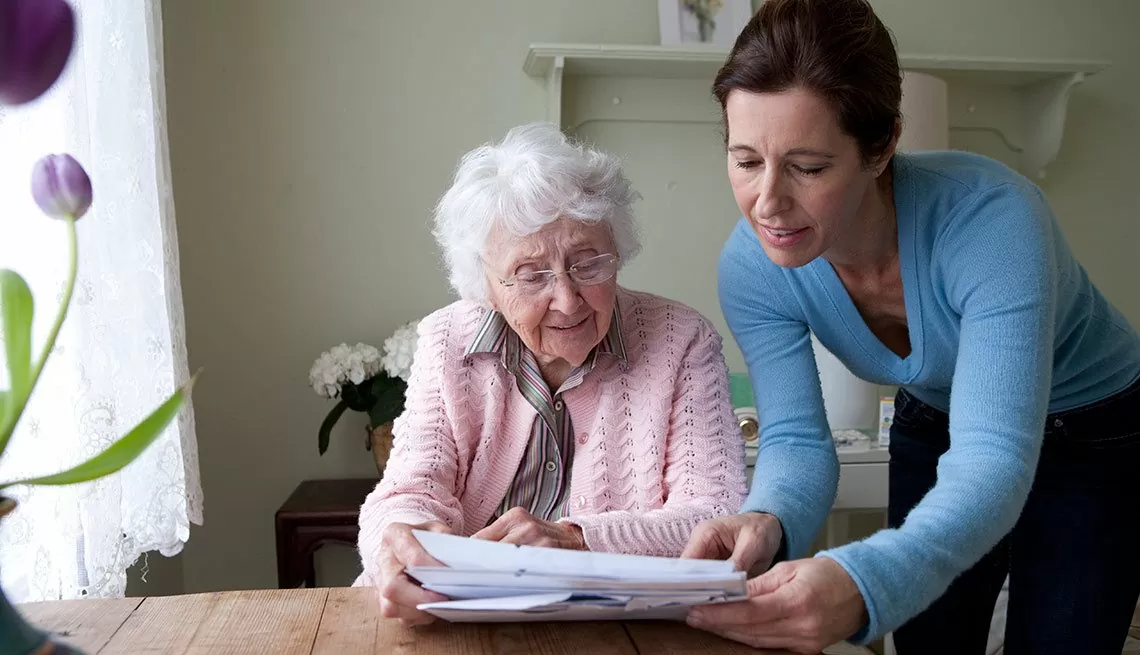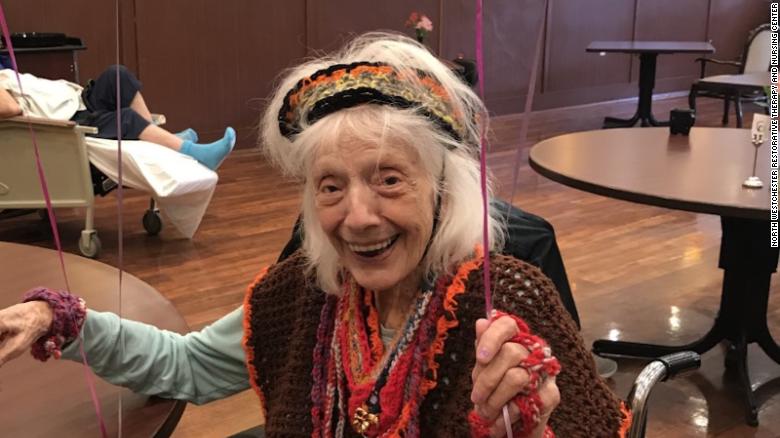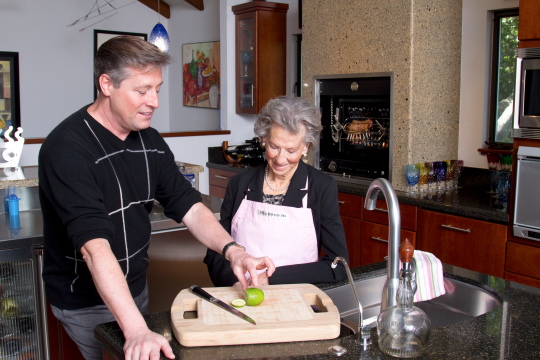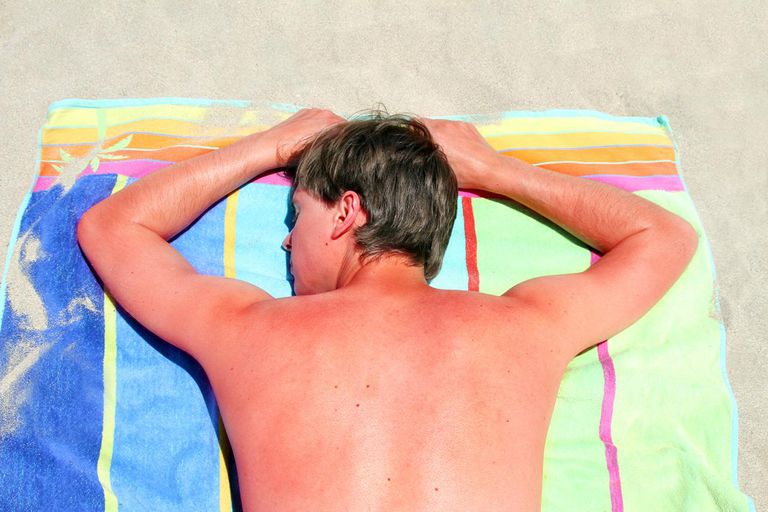If you have a senior loved one who you are struggling to find a Christmas present for, try resistance bands. They are great to give them some exercise while watching TV or just sitting around. You can find them on amazon.com and other web sites in the $10-$20 range. An easy exercise is to put the resistance band under both of your feet and hold the handles at your sides with the palms facing up. Then slowly curl your hands to your shoulders, keeping your elbows at your sides. Then slowly lower to the starting position, repeating as many times as it feels comfortable. Although it may seem inadvisable to go to Carmel Beach or Ocean Avenue for some fresh air and exercise because of the coronavirus, at least take them for a walk around the neighborhood once in a while. It’s good to get out of the house once in awhile!
Monterey, CA Alzheimer’s Sufferers Get New Hope
According to a study which was published in The New England Journal of Medicine, Eli Lilly and Company’s experimental drug could slow the cognitive decline of those suffering from Alzheimer’s disease. The downside, however, is that the drug is intravenous, not in a pill form. An early clinical trial studied 257 with early signs of Alzheimer’s. Of those, 131 received the drug and 126 received a placebo. Researchers found that those who got the drug showed a slowing of cognitive decline and the ability to perform daily functions by 32% after 76 weeks, compared to those who received a placebo. The study also looked at the build up of amyloid beta plaque and tau proteins, both of which are signs of Alzheimer’s disease. At the 52-week mark in the Phase 2 Clinical Trial, almost 60% of participants who received the drug were amyloid-negative. At week 76, amyloid plaque levels decreased by 85% in those taking the drug versus those who received the placebo. Regular readers of my blog know that both my father and grandmother had this terrible disease when they passed away. There are great people at our local chapter of Alzheimer’s Association in Ryan’s Ranch. They also have a 24-hour hotline if you need support at 800-272-3900.
Eye Drops That Work Like Reading Glasses
A new eye drop called AGN-190584 is expected to be approved by the Food and Drug Administration (FDA) later this year and could eliminate the need for reading glasses. Made by Allergen Eye Care, a division of AbbVie, the pilocarpine solution which is meant to treat the symptoms of presbyopia—an age-related condition that causes gradual loss of the eyes’ ability to focus on nearby objects. Participants in a study of the drug found they gained three more lines on the reading chart in low light compared to those who received a placebo. The drops begin working as soon as just 15 minutes after they were applied and reached their peak effectiveness after about an hour. For glaucoma, pilocarpine improves the outflow of fluid from the eye that lowers the intraocular pressure. With presbyopia patients, it’s being used to constrict the pupil.
Monterey, CA Hope For Those With ALS, AKA Lou Gehrig’s Disease
Lou Gehrig’s disease, or ALS, seems similar to Alzheimer’s disease but attacking the body rather the brain. There is no cure for either disease, and the ailment just continues to progress and leave you more and more debilitated. However, USA Today recently ran an article about three promising themes:
- A new drug—developed in part with money from the 2014 Ice Bucket Challenge—increased the average survival of patients in clinical trials by 7.5 months.
- A first-ever clinical trial is testing multiple ALS treatments at once; and
- Record levels of federal research funding are planned for this year.
Many are hopeful that Amylyx’s AMX0035 which got a $2.2 million grant from the $111 million Ice Bucket Challenge, will be approved by the FDA. Findings for AMX0035’s Phase 2 trial were so promising that the ALS community is pushing the FDA to fast track approval. They have gone so far as to ask the FDA to skip a Phase 3 trial, the only time in history that the ALS Association has asked the FDA to do so. However, it’s a long-shot. If you or a loved one are struggling with ALS, contact the Monterey Chapter of ALS here:
http://web.alsa.org/site/TR?pg=entry&fr_id=14647&NONCE_TOKEN=D30086CF168CADF46857EB53C986C9EA
Centenarians One Of The Fastest Growing Demographics
Centenarians, those living to be over 100 years old, are one of the fastest growing demographic groups in the United States. The number stands at 92K, with most of them women. This demographic has expanded by 44% since 2000, according to the Centers for Disease Control. According to the U.S. Census Bureau, in 40 years people in this demo will be 6x higher than today. Genetics plays a big part in how long you live. A Boston University School of Medicine study found that genetic markets accounted for 61% accuracy in predicting who lives to be 100. However, Dr. Thomas Perls from Boston University School of Medicine said it’s like winning the lottery—only one in 5,000 people will make it to be 100. The lucky ones planned financially for a long life, but many people don’t consider this long of a life a possibility when making their retirement plans. Longevity planning is becoming a new vocation. It combines conventional financial techniques with life planning. In addition to your genetics, however, lifestyle can play a big part. Staying socially and mentally vibrant are key. If you retire from work, you should take up some volunteer efforts to keep your mind active, say experts.
Hospital Care At Home To Be The New Norm?
There is growing interest to shift hospital services into patients’ homes, a movement that started even prior to the outbreak of COVID-19. Startups are providing technology to bring medical services into the home and well-known Venture Capital companies are backing them. Hospitals are finding that some common illnesses like urinary-tract infections can be effectively treated at home. This is a very common ailment for seniors and it would be great to see them recover from this at home. Hospital-at-home care hasn’t taken off in large part due to the fact that insurance companies haven’t covered it. However, many are trying to convince Medicare and private insurance companies with data published in the Annals of Internal Medicine showing home hospitalization reduced costs, healthcare use and readmissions, while increasing physical activity compared with typical hospital care. In addition, Medicare recently introduced a new program whereby hospitals can be reimbursed for home care they provide to patients during the pandemic.
https://www.wsj.com/articles/crop-of-startups-move-hospital-care-into-the-home-11614853803
Alzheimer’s Association To Host Webinar on the Impact on South Asians 3/7
Join the Alzheimer’s Association on Sunday, March 7 for a webinar on the impact of Alzheimer’s disease on South Asians at 3:00 to 5:00 p.m. PST. This two-hour session will highlight the latest in Alzheimer’s research, ways to reduce your risk, as well as cultural implications. The key topic will be : The Science Behind Alzheimer’s Dementia Care in India, Healthy Living for Your Body and Brain. To register, call 1-800-272-3900.
The History Of Family inHome Caregiving : Part 2 The Race Is On
I first started working with seniors way back when I was 18 years old and I worked at a skilled Nursing Facility in Tigard Oregon. The staff used to try and come up with things to entertain our clients, so we decided to ask some of the patients if they would want to come up with ideas for us to entertain them during slow times in the afternoon. One of the residents asked if we could have races in wheelchairs and we thought that would be a fun idea, so the race was on. The patients liked that idea and some of them started betting on the winners (a penny for the winning wheelchair that crossed the line first), like if they were at a horse race. The hall we used was about 100 feet long and about 8 feet wide which could accommodate two wheelchairs. We would move obstacles out of the hall to make it safer to wheel down and back to the finish line. The patients asked us to use their wheelchair so they could feel a part of the race itself. We had a good time doing this. There was around six of us that participated in the races. There was a coworker who was really good at it and she would win most the time she was up. Of course, the patients really cheered her on by clapping and cheering as she passed the rooms. The patients would sit just inside their rooms in order to keep the aisles clear and for their own safety. One time when I was up, I raced against a woman and I’ll tell you, she was good, she won but not by much. The patients kept wanting me to race against her until I could win, but I never did. The thing that I noticed is that it helped some of our patients to smile again and have a good time, for that short while during the races they would forget about where they were or how they felt and just have a good time and they were always better for it. There were a few times that some of the staff would tie with each other and the patients wanted a re-race so they could collect their penny. The second race was always harder than the first so that there was almost never a second tie because you would wear out during the second trip up and down the hall. I know it probably does not sound like it could wear you out, but after rolling a wheelchair up and down an approximate 100-foot hallway twice, it got to your arms. No one had ever had to do three trips; it would have been too much for the arms to take. Of course, the nicer and newer the wheelchair was had a lot to do with the speed and ease of use. There was a time that each staff wanted to use certain wheelchairs because it would give you an advantage over your component. It was not a huge advantage, but when you did need to do a second race due to a tie, it helped out at that point in time. These were good times for both patients and staff and we liked do it. Also, it was good exercise, and a cardiovascular workout. One time in the middle of a race a foot pedal came off and the staff member lost the race, so the patients that had bet on him asked that they redo the race due to mechanical error. The wheelchair was fixed, and the two staff members went out again. Then the person that had the mishap in the first race won the second race, and the patients wanted a run-off. However, the staff members did not have it in them to do a third time up and back and so we disqualified that race, so no one lost their penny. After about a month of doing these we noticed that some of the patients started getting bored with the idea and they wanted to be the ones doing the race, but the facility said that they could not do it, so as with all good things it came to an end. For more background on myself and the company, click here:
Make Sure You Get Enough Vitamin D
AARP The Magazine recently published an article about the fact that most seniors don’t get enough Vitamin D. With COVID-19 keeping people indoors more, this is becoming more of a problem. The article said that more than half of Americans might be Vitamin D deficient. If you can’t get outside, try foods like fatty fish (salmon, trout and mackerel) and Portobello mushrooms. Fortified milk is also a good source. If none of this works for you, get some supplements!
AARP Tele-Town Halls : Listen To The Experts
AARP has lined up a number of expert speakers for its town halls. Hear directly from health experts on important health, financial health, emotional well-being and how to care for an infirm parent. “Our intention is to host these events on a regular basis to respond to changing needs during this pandemic,” AARP Senior Vice President Jean Setfand, told AARP The Magazine (August/September Issue, page 76). An average event attracts between 75K and 100K people. For a schedule of upcoming tele-town halls, including topics, speakers, and instruction on how to log in, go to www.aarp.org/townhall where you can also listen to past events.










